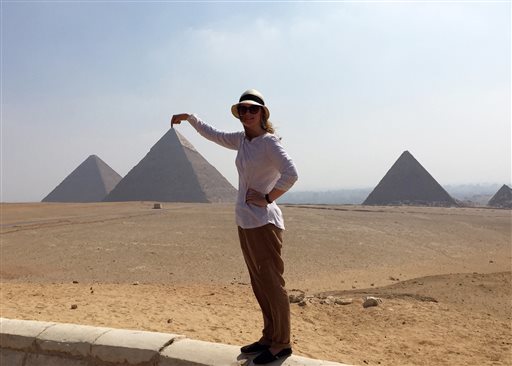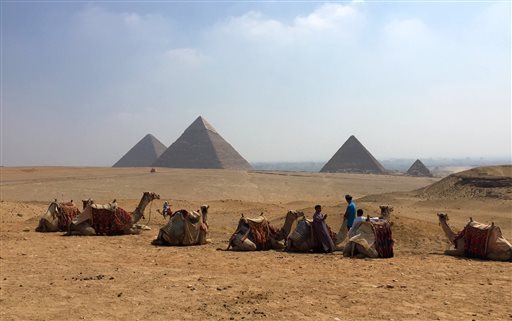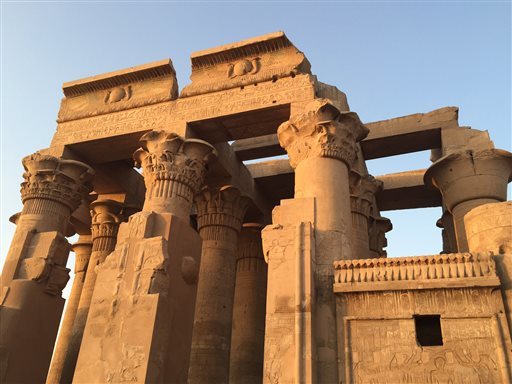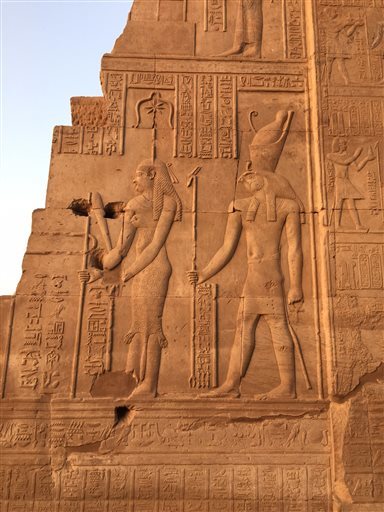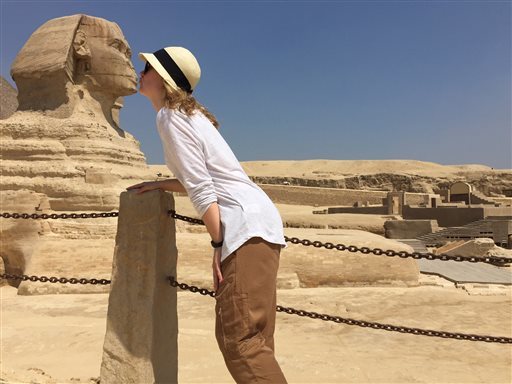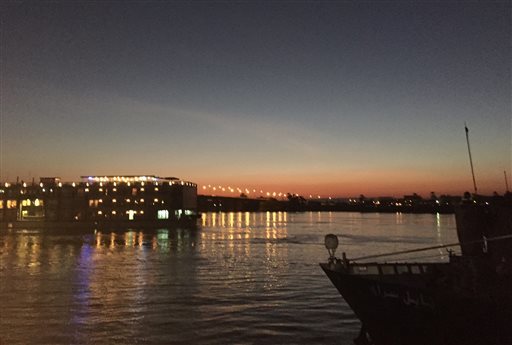What it’s like to visit Egypt now as a 1st-time tourist
CAIRO — When I told people I planned to visit Egypt, family, friends — even waiters — replied, “Wow!” and “Amazing!” But their eyes said, “Are you insane?”
ADVERTISING
Egypt’s once-thriving tourism industry has been plummeting since the 2011 popular uprising that ousted longtime autocrat Hosni Mubarak. Recent attacks have added to the uncertainty: the mistaken killings of eight Mexican tourists by government security forces, a bombing outside the Italian Consulate in Cairo, a foiled attack on the famed Karnak Temple.
Each headline brought a flood of texts from loved ones. Yes, I saw the news, I responded. I endlessly trolled TripAdvisor, searching “Is it safe to go to Egypt?” even after booking with a highly rated tour company. My stomach did some flips on the plane, until I spotted the pyramids from the air.
There are no safety guarantees in a restive country such as Egypt — or anywhere. But with a guide by my side, I never felt unsafe. Plus, I was too exhausted from sightseeing to wander around on my own.
The guides maneuver you through Cairo’s heart-stopping traffic — where lanes are merely suggestions and tapping the bumpers of merging cars is commonplace — and allow you to bypass hassles elsewhere.
For example, my guide took me straight to the camel-ride operator he trusts near the pyramids, avoiding what he said would be a raucous, grasping crowd prone to physically pulling the arms of those approaching on their own.
Instead, I hopped right on the animal, a 10-year-old boy took the reins and we set out into the sun-drenched desert alone. I was nervous the camel might toss me off with a kid in control, but no problems materialized and I was able to re-create a photo I saw every day on the wall of my childhood home: my father on camelback in the dusty desert circa 1980.
My guides also took pro photos, key for a solo traveler such as myself. The boy expertly posed me, telling me to hold out my finger to make it look like I was touching the top of a pyramid. My Cairo guide snapped me sitting on the steps of the Great Pyramid and instructed me to pose so I appeared to kiss the Sphinx.
Every guide, driver and other worker dependent on tourists and tips was eager to please, pressing me to drink enough water and taking me to government-operated shops for authentic, beautiful gifts, including hand-painted papyrus and hand-chiseled statuettes.
You still haggled, but it was nothing like the relentless street touts, who joke, cajole and harass tourists into buying cheap wares. My guides said tourist police at major attractions won’t allow sellers to get overly aggressive with visitors, but vendors were pushy, especially with tourism ebbing so dramatically. You can say, “No, thank you,” ignore them and keep walking, but at the cultural sites, where you have to traverse a gauntlet of shops, there’s no avoiding them.
One seller followed me for 15 minutes to a temple entrance, making me promise to stop in his shop, while others shouted, “Welcome to Alaska!” — a nod to the suffocating heat. He found me again as I stopped for a drink and pursued me as I tried to leave. He and others held up shirts, pointed to “Made in Egypt” tags and tossed them at you if you refused.
On the Nile cruise ship, souvenir-sellers in speed boats threw their ropes to the crew, calling “Hello!” and “Hola!” to passengers above and hurling up blankets to anyone who peeked over the railing.
It helped that I prepared for the worst when it came to street vendors, traffic and even the crushing poverty. Through the window of my Cairo hotel, I saw half-completed apartment buildings, twisting metal on their roofs awaiting new floors. Trash piled up and spilled into the city’s polluted section of the Nile, left for thin horses and donkeys to nibble.
It also was odd to stand in Tahrir Square across from the Egyptian Museum, ground zero for the revolution, in an area where hotels and businesses still haven’t recovered. The green plot seemed small compared with its significance. An adjacent burned-out building stood slated for demolition four years later.
But for those with a sense of adventure, visiting now has big advantages. Tourists were few enough that I got photos at many temples with no one in the background. There were 40 people on my cruise, a luxurious journey with truly fantastic food and service that normally boasts 140 passengers.
While you can learn about mummies in school and admire photos of the Great Pyramid, that’s nothing like actually clambering up its ancient steps. Or staring down the dark tomb of Merneptah in Luxor’s Valley of the Kings to see a blanket of etched and painted stars, the blues and yellows as vibrant today as they were 3,000 years ago.
After gazing into the golden eyes of King Tut’s death mask, dipping my hand in the Nile during a sunset boat ride and tracing hieroglyphs on ancient temple walls with my finger, I must say: It’s time to go.


